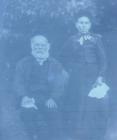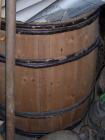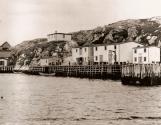1
One can say the start of Bay d'Espoir was when Newman and Company, based in Harbour Breton, started to show an interest in the Bay d'Espoir forests. In the early 1800's, Newman and Company employed the first crews to carry out logging in Bay d'Espoir. In 1815 – 1817, Newman and Company constructed a number of vessels at Great Jervois with timber cut in Bay d'Espoir. Of the merchant crews who visited Bay d'Espoir, it appears that Newman's crew were most frequent.3
The Newman Family originated from Totnes, Devon but by the end of the fourteenth century were living in Dartmouth, South Devon. By the early 1500's, Thomas Newman began importing European wines in exchange for fish and salt. There began the relationship between the family and the Newfoundland fish trade.The practice of sending shipments of port wine to Newfoundland began about 1679 when a Newman ship left Portugal, bound for England with a shipment of Port Wine. The ship was chased by a French privateer and ran off course. The captain decided to head for the plantation in St. John's. The ship wintered over and upon return to London they discovered the quality of the port wine had greatly improved. It was concluded that the rolling motion of the Atlantic voyage and something in the air or climate of Newfoundland had matured the wine, giving it a special character and a high degree of perfection. This began the 300 year old tradition of sending wines to Newfoundland to mature.
The Newman family eventually set up an operations base in Newfoundland, with facilities in St. John's, Harbour Breton and in several other communities along the south coast. By 1700, the Newman trading plantations had become a permanent fixture in Newfoundland. The business consisted mostly of the trade of salt cod fish and stores, as well as whaling and sealing expeditions to Greenland, carried out as early as 1744. In 1835, one of the staff of Messrs, Newman's plantation, whose name was Matterface, died; his body was preserved in a puncheon of rum for it's conveyance to England.
5
Each spring in Dartmouth, Newmans would recruit "pauper-apprentices" (inexperienced men), to come to Newfoundland for an eighteen month apprenticeship. After this period, these men were given the option to return to England or remain in Newfoundland. A large portion of the present population on the South Coast can trace their ancestors back to these pauper-apprentices. The first permanent resident of Head Bay d'Espoir, William Barnes, was one of the paupers that the Newmans recruited.6
As a contemporary merchant, Newmans did little fishing on their own account but advanced supplies to and received in payment the catches of independent fishermen, what was called the supplying system, also known as the credit or truck system.In 1835, Nicoll and Company, another fishing merchant from Jersey, England, had winter crews stationed at Swanger's Cove in winter tilts. This was referenced in "Edward Wix, Six Month of a Newfoundland Missionaries Journal". They also had trading vessels that did business at Burgeo and LaPoile.



